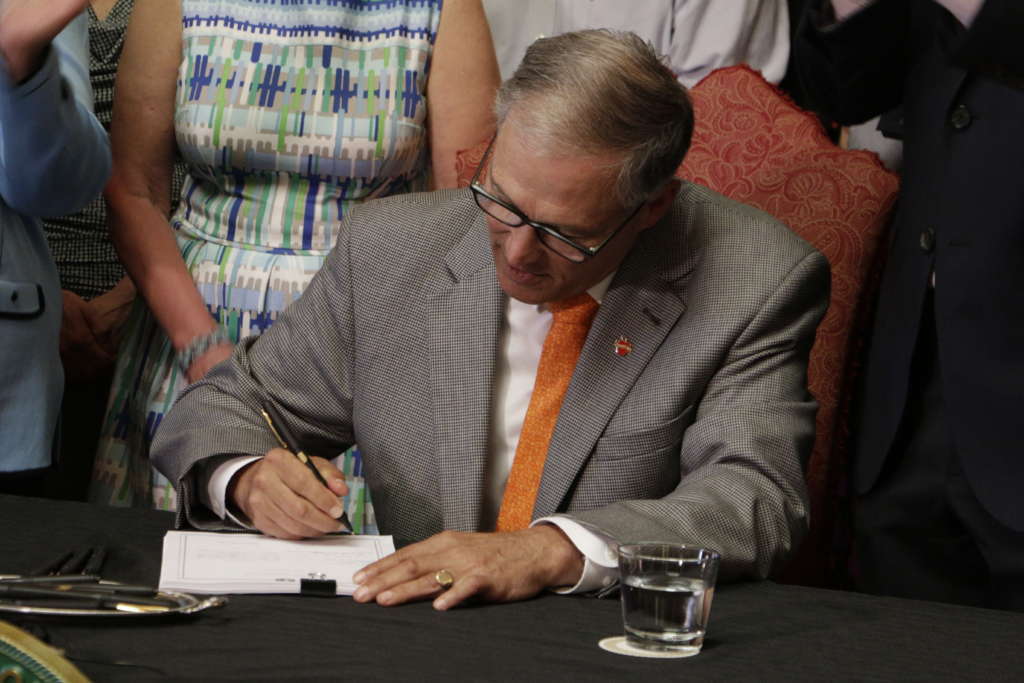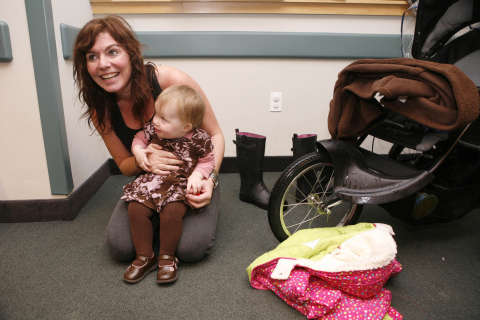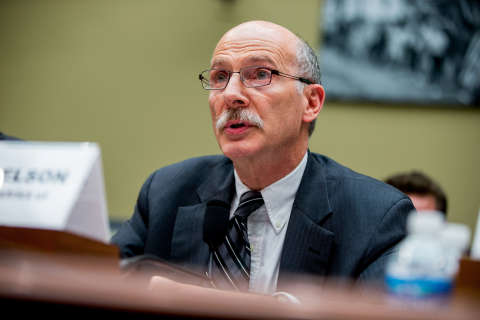WASHINGTON — When Dr. Rebecca Hall was expecting her first child, stress set in long before sleepless nights and feeding schedules became a reality.
The Connecticut-based dermatologist wasn’t offered maternity leave benefits through her medical practice and was disqualified from receiving the 12 weeks of unpaid time off that many working mothers get through the Family Medical Leave Act, due to the small size of her office.
But even if she had access to that time, she couldn’t afford to take it.
“Basically, if I’m not bringing home my income, it’s hard for us to make our mortgage payments and my massive medical student loans,” Hall said.
The longest she and her husband could go without her paycheck was four weeks, so that’s the amount of time she planned to take after giving birth.
Hall considers herself lucky. Unlike many women, her daughter arrived right on time and without any complications. Had her baby been two weeks late, she would have only had two weeks at home to recover from childbirth and to bond with her infant.
Hall’s story is not unlike other Americans’, since the U.S. currently has no standard policy for paid maternity or paternity leave, and limits unpaid time off to full-time employees and those working for larger employers.
Because of this, some women return to work shortly after leaving the hospital. Others — about 14 percent of U.S. workers — receive several weeks or more of paid time off with their newborns.
But this patchwork approach may not be the case for much longer.
In recent years, those on both sides of the political spectrum have campaigned for paid family leave. Ivanka Trump, daughter and official assistant to the president, is currently spearheading an initiative to bring six weeks of paid family leave to American families. During the 2016 presidential election, Democratic candidate Hillary Clinton argued for 12 weeks at two-thirds salary.
One thing that has puzzled Brigid Schulte, journalist, author and director at New America’s Better Life Lab, is the number tied to each proposal — whether it’s six weeks or six months.
“What is that based on? How much is enough?” Schulte asked.
Leaving politics behind and turning to science, Schulte and her colleagues at New America recently evaluated hundreds of national and international studies to determine how the amount of time off impacts a child’s overall health and the health of the mother, as well as gender equality and the economy.
Here’s what they found:
Infant health recommendation: 1 year
Despite being a wealthy and industrialized nation, the U.S. doesn’t have much to brag about when it comes to infant health and well-being. It has a higher infant mortality rate than countries such as Bosnia, Guam and Latvia, and a higher SIDS rate than other advanced economies.
However, New America’s research found that extended parental leave can decrease preterm births, low birth weight rates and infant death rates. Adequate time off also increase rates of breast-feeding, which is linked to a number of health benefits, including a lower risk for asthma, ear infections and Type 2 diabetes.
According to New America, a study out of Norway found that having mom or dad at home for an extended time can even produce benefits beyond the first few years of a child’s life, including improved cognitive development, greater academic success and higher earned wages before 30.
“So really, there are lifelong implications for having an adequate amount of paid family leave, right from the start, for infants and children,” Schulte said.
New America’s overall recommendation for the best possible outcome for infant health: one year of paid time off, split between both parents.

Maternal health recommendation: 6 months
D.C.-based hairstylist Valerie Carrasquillo returned to work just two weeks after having each of her two kids — both by cesarean section. Carrasquillo says unless stylists work for a corporation, most don’t have access to benefits such as health insurance and maternity leave.
“And I know a lot of women who are in the industry and hesitate to become mothers because of that,” Carrasquillo said.
Her husband left his job to be a stay-at-home dad, so immediately after giving birth, she had to go back and collect a paycheck.
“It was tough, obviously, leaving your baby after two weeks,” said Carrasquillo, who pumped between clients and learned to cut hair sitting down to help her incision heal.
“I had to hustle.”
Schulte says it takes well beyond a few weeks to heal after giving birth and, in many cases, more than a few months.
“There’s lots of good research that shows that even at six months, the majority of women are still experiencing at least one symptom of childbirth — illness, fatigue, urinary incontinence,” Schulte said.
Research shows that maternity leaves shorter than 12 weeks can lead to increased risk for maternal depression and anxiety, including postpartum depression.
New America’s overall recommendation for the best possible outcome for maternal health: six months paid time off.
Gender equality recommendation: equal time for mothers and fathers
Paid paternity leave is becoming more popular in the U.S. as large companies boast the benefit in an effort to attract talented employees. Still, it is not the norm.
However, research shows that when fathers have access to paid leave, they not only have the time to form better bonds with their children, they have an opportunity to enforce gender equality.
Schulte says in countries where equal amounts of maternity and paternity leave are offered to new parents, couples are more likely to share child care and household responsibilities and to keep equal work hours. In contrast, families who only have access to maternity leave are more likely to fall into traditional gender roles.
New America’s overall recommendation for the best possible outcome for gender equality: offering equal amounts of paid time off for both parents.

Business impact: 9 months to 1 year
In writing the report, Schulte found that if maternity leave times are too short or too long, women are less likely to return to work, for varying reasons. Research shows the sweet spot is between nine months to a year off.
“It’s the best way to guarantee healthy development, healthy recovery, but also to give women the best opportunity to come back into the workforce at the same level and not [negatively impact] their career,” Schulte said.
Research also shows that workplaces with “family supportive” policies are more productive and have higher rates of employee retention.
New America’s overall recommendation for the best possible outcome for the business economy: nine months to one year of paid family leave.
Looking forward
In the U.S., access to family leave, whether paid or unpaid, is typically reserved for college-educated women employed by larger companies, Schulte explains.
Self-employed, part-time and low-wage earning mothers have fewer options when it comes to choosing between caring for a new child and getting back to work.
“It creates a lot of stress and financial problems that lead to actual mental and physical problems,” Schulte said.
“We really do not give families the time that they need to really recover, to bond, to set their family dynamics and support them so that people are able to combine work and life in a way that is good for family stability, good for communities and, ultimately, good for business and the economy.”
In recent years, some states have taken matters into their own hands by offering paid family leave through insurance funds: California, Rhode Island and New Jersey are a few of them. In February, D.C. passed an eight-week paid family leave bill, and changes could be coming from the federal level in the near future.
Schulte says she hopes New America’s report sheds some light on the available data so lawmakers can build the best possible legislation to support families across the country.
“The politicians will come up and craft compromises; we really wanted to look at the science,” she said.
“What [they] do with it, that’s the next step.”
Read the full report on New America’s website.







